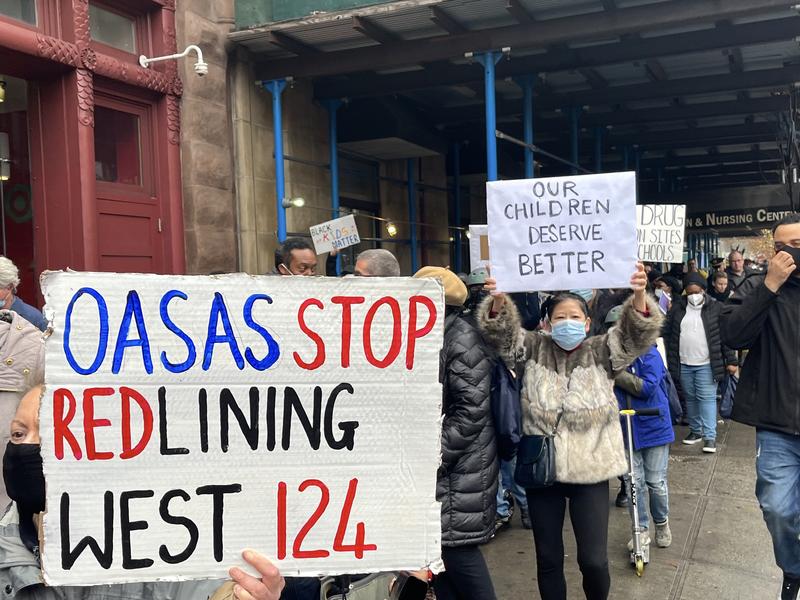
Anne-Karine Dabo, a mother of a two-year-old who moved to Harlem three years ago, began avoiding the playground at Marcus Garvey Park last year. The intersection of 125th Street and Lenox Avenue came next. Soon, she was finding alternate routes around her own neighborhood.
"It was more than just seeing people who were high. It was seeing people who looked dead," she said.
At first, she regularly called 911 to help drug users in distress but stopped when it became commonplace shortly before the pandemic began. Dabo said the neighborhood has rapidly changed for the worse, and that the uneven distribution of opioid treatment programs across the city is to blame.
For decades, Harlem residents have voiced concerns that their neighborhood has been a too-convenient location to place social services, like shelters and addiction programs, that other neighborhoods fight hard to keep out. This past weekend, Rev. Al Sharpton and U.S. Rep. Adriano Espaillat led a protest against a newly installed supervised injection site in Harlem, the first facility of its kind in the nation.
Protesters made clear these sentiments are not driven by a not-in-my-backyard mentality — many of the Harlem protesters support the overall creation of overdose prevention services. But these residents have been galvanized by the fact that most of the patients attending opioid programs in Harlem do not live in Harlem. That first came to light in 2019 when a community group called the Greater Harlem Coalition requested data from the New York State Office of Addiction Services and Supports (OASAS), which is responsible for licensing clinics.
In an independent analysis of the updated data for 2019-2020, WNYC/Gothamist found that fewer than 25% of admissions — 605 people — to Harlem clinics were Harlem residents. The remaining 75% were patients — 1,841 people — who traveled from as far as Staten Island or Westchester to get to the clinics. Some patients travel upwards of two hours from areas with far fewer programs than Harlem, and long commutes are known to impede the delivery of addiction care. Mapping the city’s centers and their programs reveals a concentration in Harlem and the south Bronx.
